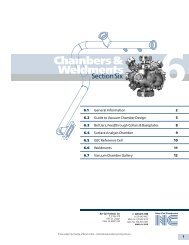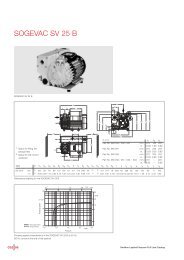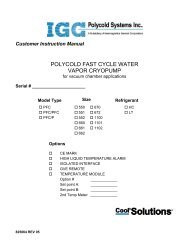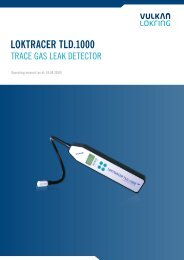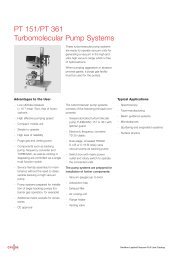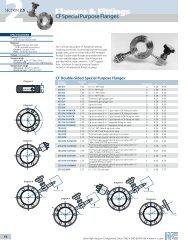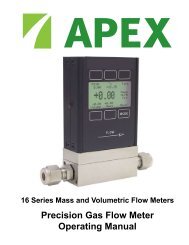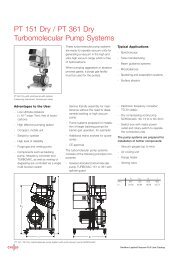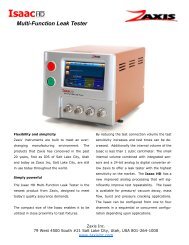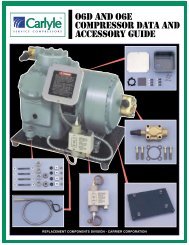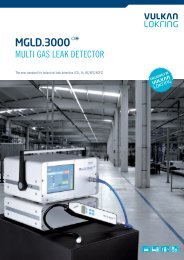Vulkan Lokring MGLD.3000 Product Manual - Schoonover, Inc.
Vulkan Lokring MGLD.3000 Product Manual - Schoonover, Inc.
Vulkan Lokring MGLD.3000 Product Manual - Schoonover, Inc.
You also want an ePaper? Increase the reach of your titles
YUMPU automatically turns print PDFs into web optimized ePapers that Google loves.
Multi Gas Leak Detector <strong>MGLD.3000</strong><br />
Operating instructions<br />
Check and calibration results<br />
Warnings / functions<br />
Warning symbol - blinks<br />
during check and calibration<br />
Probe is initialized<br />
Date and results of the last 10 functional tests are logged for each probe.<br />
Return to the previous leak search menu<br />
Return to the previous leak search menu<br />
Environment setting<br />
In addition to the sensitivity of the hand probe, there is a second factor that must be taken into account for<br />
a successful leak search.<br />
To determine the size of a leak, it is necessary that wherever possible the entire gas quantity that flows<br />
through the leak within a specific time unit is detected by the hand probe of the leak detector and can thus<br />
be detected by the gas sensor. The transfer path from the leak to the leak detector is directly determined<br />
by the air flow in the surrounding air. There are different flows in the surrounding air in different environments<br />
(e.g., wind during a leak test conducted outdoors, a continuous air draft caused by air-conditioners<br />
in indoor spaces). The larger the flow in the surrounding air, the less gas flowing from the leak that<br />
reaches the gas sensor in the hand probe. However, to enable a leak search to be conducted in variable<br />
environmental situations, a transfer function can be selected from the leak to the gas sensor which by<br />
means of a mathematical procedure increases the measured concentration within specific limits and in this<br />
way should indirectly account for the gas portion not reaching the gas sensor.<br />
The change in selectivity is another way of detecting leaks adapt to specific environmental conditions.<br />
Setting a high selectivity allows a separation between the refrigerant gases of the detectable probe. A<br />
strong separation, however, can usually only be achieved under non-congested environment with very low<br />
background concentrations of other detectable gases from the gas sensor (eg, hydrocarbons, hydrogen).<br />
Setting a low selectivity allows detection of leaks, even under polluted ambient conditions. This setting,<br />
however, the separation between the different refrigerants is reduced.<br />
A too high setting can affect the selectivity of detection of leakage in polluted environments and<br />
the output to low concentrations or leak.<br />
BAL_MGLD3000_20101001_en.doc 35-54




